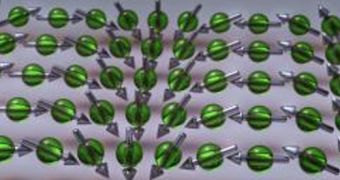A new conservation law is always a very important thing, and experts working for the Materials Sciences Division (MSD) at the US Department of Energy's (DOE) Lawrence Berkeley National Laboratory (LBNL) take high pride in their work.
By carefully analyzing the collective spin state of very mobile electrons inside semi-conductors, they discovered that scientists could eventually be able to control the spinning of these electrons and create much more efficient spin transistors, as well as other devices belonging to the field of spintronics.
“With our spin-orbit tuning, electrons that start at point A with the same spin may take many different paths, but when they reach point B they'll end up with the same spin again,” Jake Koralek, the MSD researcher who is also the first author of a new paper detailing the finds, explains. The study can be read in the April 2nd issue of the scientific journal Nature.
“With spin-orbit tuning, you can control both the rate at which the electrons precess and the direction in which they precess. What we've done is tune the spin-orbit coupling to insure that no matter which direction they're going, they always precess in the same plane, with their spins varying periodically between spin-up and spin-down at a rate proportional to their velocity,” he adds.
In addition, University of Berkeley physicist Joseph Orenstein's team has managed to create a spin helix that is very persistent. As opposed to existing helices, which only spin for short amounts of time, the ones recently devised after sophisticated procedures are able to continue to move for a very long time, although admittedly not infinitely.
Still, they spin for much longer than any other one out there today. Another good news is that the parameters of the experiment were not yet fully developed when the tests were conducted, so the LBNL team say that there is still room for improvement in their design. That is to say, they could reach a point where the speed and life span of the helix could become even larger than that recorded in the experiment.

 14 DAY TRIAL //
14 DAY TRIAL //